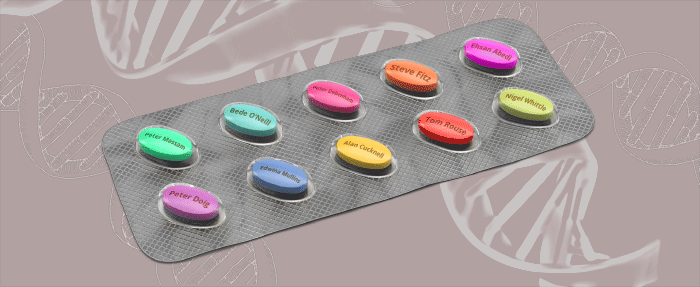This is the third blog by Peter in his series ‘Disruptive Tech’.
Background
Traditional medical and life insurance companies attempt to identify risks in order to provide effective policies. However, for the most part, those risks, such as the impact of high blood pressure on cardiac disease, can be hard to quantify, so to a large extent, it is assumed that risks are equal for all in a pool. The absence of definable risk factors also means that equal knowledge is available to either party to assess risks.
But the new science of genetic analysis is beginning to invalidate that assumption. We are in the throes of a Genomic Revolution, in which we can more precisely identify specific causes and create personalised treatments for patients. As the market begins to catch up with the cutting-edge science, this revolution will affect healthcare services in all countries but will have an even greater effect on those countries that have any kind of paid insurance Healthcare model with premiums based on individuals’ personal health risk scores.
Matt Hancock, UK Health Secretary, only last week announced that he wants all children in the UK to receive whole genome sequencing at birth in order to map out the risk of genetic diseases and offer “predictive, personalised” care. As a start, this genomic sequencing will be available to all UK children diagnosed with cancer by the end of 2019, which is only a month away.
Effects on the Healthcare Industry
New personalised medicine is, in the short term, unlikely to lead to fully 100% individualised treatments; the costs and practical difficulties remain too large. What it will do is lead to a better selection being made of currently available treatments based upon knowledge of an individual’s genetic makeup and the specific disease they have. One very specific outcome is that there should be fewer unnecessary tests or medication, and the patient experience around their illness should also drastically improve. If medicines can be targeted to those patients who will gain from treatment then the overall healthcare costs should be reduced.
In addition, the role of the future pharmacist will need to drastically change to give them the skills to both obtain the necessary information and use it effectively (something being recognised in pharmacist training) rather than just giving everyone the “standard” drug.
Two Examples:
Painkiller response:
Managing both long-term chronic pain and short term acute pain is something we all regard as vital; many (most?) people are more concerned about the risk of significant pain than death. However current analgesic use both leaves many people in pain and causes very significant iatrogenic harm.
Pain perception and its pharmacological modulation are significantly affected by human genetic factors (heritability estimates suggest that up to 30-76% of the variance in pain behaviour can be explained by genetic influences). These affect both pharmacodynamic and pharmacokinetic processes of analgesic molecules. An understanding of the role of key genes in the pain response, together with fast genotyping (i.e. in-pharmacy, in-GP surgery) could provide improved pain relief by identifying the most effective analgesic for an individual and the most appropriate treatment regimen.
Cancer treatment:
Traditionally cancer treatment has been based mainly on the assumption that the type of affected organ is the primary determinant of treatment regimes. However the new science of genetic medicine is beginning to demonstrate that people with the “same” cancer can have very different forms of the disease, due to the presence of different gene mutations, so responses to treatment can vary dramatically. In fact, cancer cells have many mutations, but only a few, the so-called ‘driver mutations’ are directly involved in the cancer process. Some, but not all of these driver mutations are targetable by specific therapies such as antibodies. Therefore rather than just using broad chemotherapy and radiotherapy, where cancer has a particular genetic weakness our new genomic knowledge can be exploited for more effective treatment programs.
Effects to the Insurance Industry
There are two short term scenarios:
- Insurance companies are not allowed to use testing data
- People with low risk may decide to skip insurance. The remaining pool becomes riskier to the insurance company, more uninsured people (who of course can still get ill).
- People with high risk take out larger insurance, and claims may increase.
- Insurance companies are allowed to use testing data – people with high risk cannot get affordable insurance.
Likely long-term societal response:
- Socialised medicine (risks across the pool of the entire population)
- And/or compulsory insurance (e.g. Obamacare)
(Note: This is already widely recognised by actuaries).
How should organisations respond?
I spoke to Dr Nigel Whittle, our Head of Healthcare for his views: “In my earlier career I was involved in the momentous discovery of oncogenes and so I am well aware of the impact that genetic factors can have on medical treatment. Disruptive technology such as genetic sequencing will have a huge impact on the medical industry, and consequently the insurance industry. It is vital that organisations working in these sectors anticipate these changes, and innovation planning can be key to staying relevant in a disrupted industry.”
If you would like to chat further to our medical team, please email hello@18.170.153.187 to set up a call.

